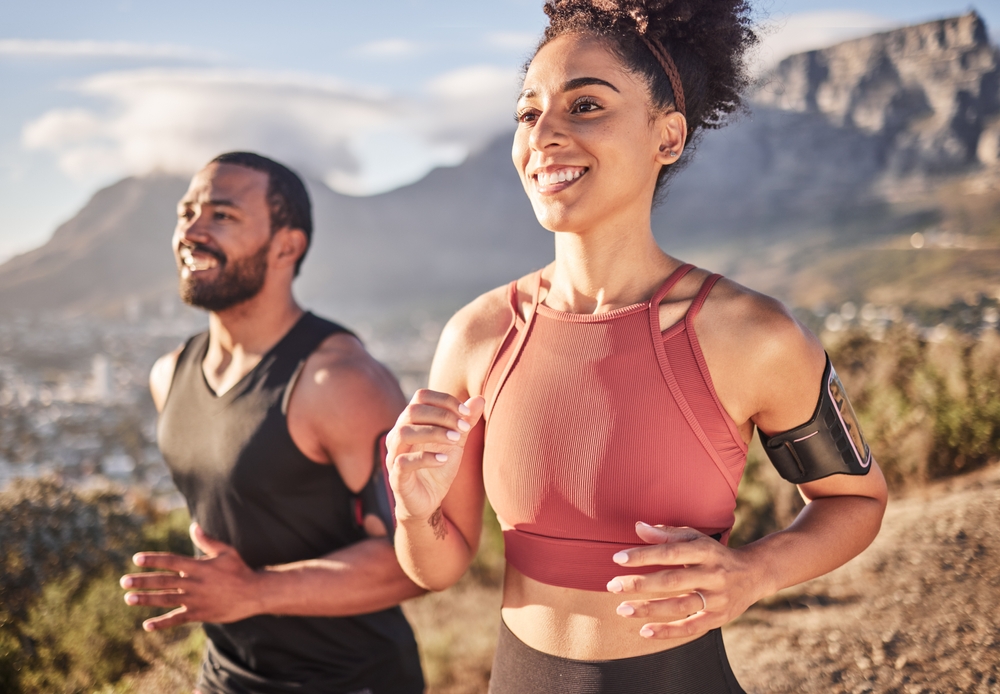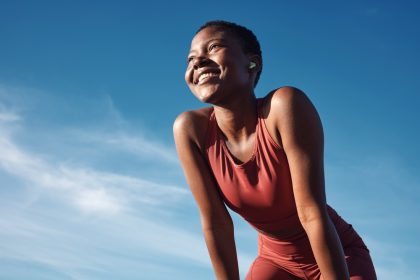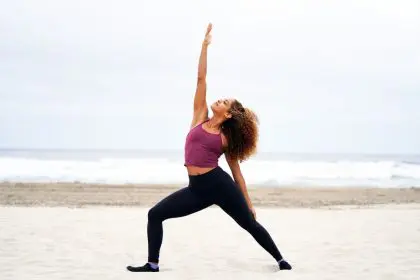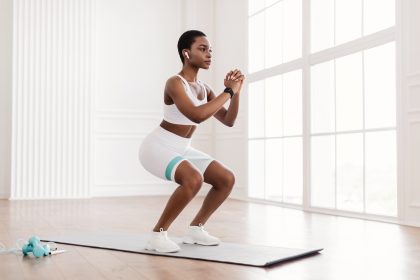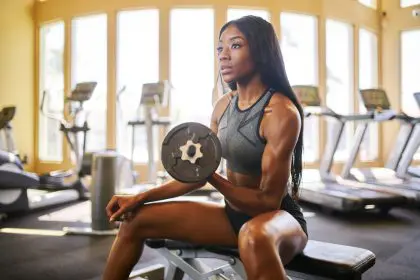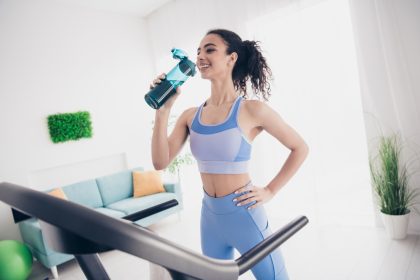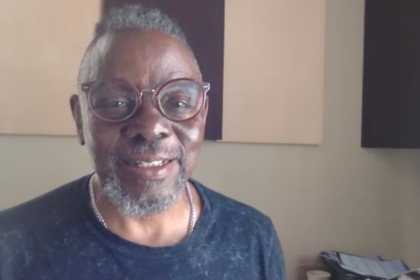Ever spent months grinding away at crunches for abs that never seem to appear? Or done endless bicep curls without getting the toned arms you’re after? You might be focusing on all the wrong muscles. The truth about achieving that coveted “toned” look isn’t about working the muscles everyone talks about — it’s about targeting the muscles nobody mentions.
The toning myth nobody talks about
First, let’s clear up the biggest misconception in fitness. “Toning” isn’t actually about making specific muscles harder or more defined in isolation. What creates that coveted athletic look is the combination of two factors working together — reducing overall body fat percentage and developing muscle in strategic areas that create visual impact.
Most workout programs get this formula completely backward. They focus on high-rep, low-weight exercises for “shaping” specific body parts while neglecting the compounds movements and key muscle groups that actually transform your physique. The result? Endless frustration and minimal visual change despite consistent effort.
The secret to an attention-grabbing physique isn’t about exhausting every muscle equally. It’s about prioritizing the muscle groups that deliver maximum visual impact while supporting fat loss through metabolic enhancement. Some muscles simply matter more than others when it comes to creating that coveted athletic silhouette.
The forgotten muscles that create a head-turning physique
When most people think about getting toned, they focus on the showy muscles — abs, biceps, and chest for men, abs and glutes for women. But the muscles that actually create the most dramatic visual transformation aren’t the ones staring back at you in the mirror.
The posterior chain — the powerhouse muscles along the back of your body — actually determines your physique more than any front-facing muscle group. These include your rear deltoids, rhomboids, lower trapezius, hamstrings, and glutes. When properly developed, these muscles literally transform your silhouette from every angle.
Think about how the eye processes a physique. What registers as “fit” isn’t just the presence of certain muscles but the entire structural relationship between muscle groups. A well-developed posterior chain creates the V-taper effect from behind, makes the waist appear smaller, improves posture, and creates the athletic alignment that registers as “toned” even before someone sees your abs.
Perhaps most overlooked are the mid-back muscles that create width and improve posture simultaneously. When your rhomboids and rear deltoids are properly developed, they physically pull your shoulders back and down, instantly improving how your entire physique presents itself. This postural improvement alone can make someone appear more athletic without any other changes.
The metabolic multipliers that accelerate definition
Beyond visual impact, certain muscle groups act as metabolic gold mines. They burn significantly more calories during workouts and continue burning energy long after you’ve left the gym. Targeting these metabolic powerhouses creates faster fat loss, which ultimately reveals the muscle definition you’re building.
The quadriceps and glutes top this list as the largest muscle groups in your body. A challenging lower body workout can burn nearly twice the calories of an upper-body only session while elevating your metabolism for up to 48 hours afterward. This metabolic boost accelerates the fat loss necessary to reveal muscle definition throughout your entire body.
The often-neglected lateral deltoids create that coveted shoulder width that makes waists appear smaller by comparison. Unlike many smaller muscle groups, shoulders can handle frequent training volume, making them perfect for metabolic circuits that maintain elevated heart rates while building definition.
Core stabilizers like the transverse abdominis and internal obliques deserve special attention not just for their aesthetic impact but for their constant activation during compound movements. Strengthening these deep stabilizers improves performance in every other exercise while creating the natural abdominal compression that gives the appearance of a leaner midsection.
The workout that targets what matters most
This workout focuses specifically on the muscle groups that create the most dramatic visual impact while maximizing caloric expenditure. Perform it three times weekly, allowing at least one day between sessions for recovery.
Warm-up: Begin with 5 minutes of dynamic movement to increase blood flow and prepare joints for work. Include arm circles, torso twists, hip hinges, and bodyweight squats.
Circuit One: Perform 45 seconds of each exercise followed by 15 seconds of rest. Complete 3 rounds before moving to Circuit Two.
- Reverse Lunges with Rotation — This movement targets the glutes and quads while engaging the often-neglected oblique muscles that create waist definition. Step backward into a lunge while rotating your torso over the front leg.
- Renegade Rows — These work the critical back muscles that improve posture while forcing core stabilizers to engage continuously. From a plank position with hands on dumbbells, row one weight to hip height while maintaining a stable body position.
- Lateral Raise to Front Raise Complex — This shoulder-focused movement creates the width that makes waists appear smaller. Lift weights out to the sides, lower halfway, then raise to the front in continuous movement.
- Mountain Climbers — This full-body movement maintains elevated heart rate while engaging core stabilizers that create midsection definition. From a plank position, drive knees toward chest in a running motion.
Circuit Two: Perform 45 seconds of each exercise followed by 15 seconds of rest. Complete 3 rounds before moving to the finisher.
- Single-Arm Dumbbell Row — This unilateral movement targets the critical back muscles while engaging rotational stability in the core. Place one knee and hand on a bench while rowing a dumbbell with the opposite arm.
- Curtsy Lunges to Side Leg Lift — This complex movement targets the outer glutes and hip abductors that create lower body shape and stability. Step one leg behind and across your body, then rise and lift the same leg out to the side.
- Push-up with Shoulder Tap — This movement builds chest definition while challenging core stabilizers through anti-rotational work. Perform a push-up, then at the top position lift one hand to tap the opposite shoulder.
- Hollow Body Hold with Flutter Kicks — This core-intensive exercise targets the deep abdominal muscles that create midsection definition. Lie on your back with shoulders and legs lifted, lower back pressed into the floor, and perform small alternating leg kicks.
Metabolic Finisher Perform this 4-minute Tabata finisher to maximize caloric burn. 20 seconds of work followed by 10 seconds of rest for 8 total rounds, alternating between:
- Squat Jumps — The ultimate lower body metabolic stimulator, targeting the largest muscle groups in your body while creating cardiovascular demand.
- Mountain Climbers — Maintaining elevated heart rate while continuing to engage core stabilizers.
Beyond the workout
While this routine targets the muscles that matter most for visual impact, remember that nutrition remains the critical factor in revealing the definition you’re building. No workout can out-train a diet that doesn’t support fat loss and muscle preservation.
Focus on protein intake of at least 0.7 grams per pound of bodyweight daily to support muscle maintenance while in a slight caloric deficit. Emphasize whole foods with high water and fiber content to manage hunger during fat loss phases.
Hydration also plays a crucial role in muscle definition. When muscles are properly hydrated, they appear fuller and more defined. Aim for water intake of at least half your bodyweight in ounces daily, with additional hydration during and after workouts.
Recovery deserves equal attention in your toning program. Muscles don’t develop during workouts — they develop during the recovery period afterward. Ensure quality sleep of 7-9 hours nightly and consider incorporating active recovery techniques like light walking, swimming, or yoga between training sessions.
The mindset shift that delivers results
Perhaps the most important element in achieving a toned physique is shifting your focus from isolated “problem areas” to a comprehensive approach that prioritizes performance and progression. The most impressive physiques come from training movements rather than muscles, challenging your body as an integrated system rather than a collection of parts.
Track your progress through performance metrics rather than appearance alone. Can you perform more reps, lift more weight, or complete movements with better form? These improvements serve as proof of progress even when visual changes occur gradually.
This workout creates the foundation for a physique that looks athletic and capable because it actually is athletic and capable. By focusing on the muscles that create the most dramatic visual impact while supporting overall physical performance, you’re building a body that not only looks toned but functions at a higher level in everything you do.

